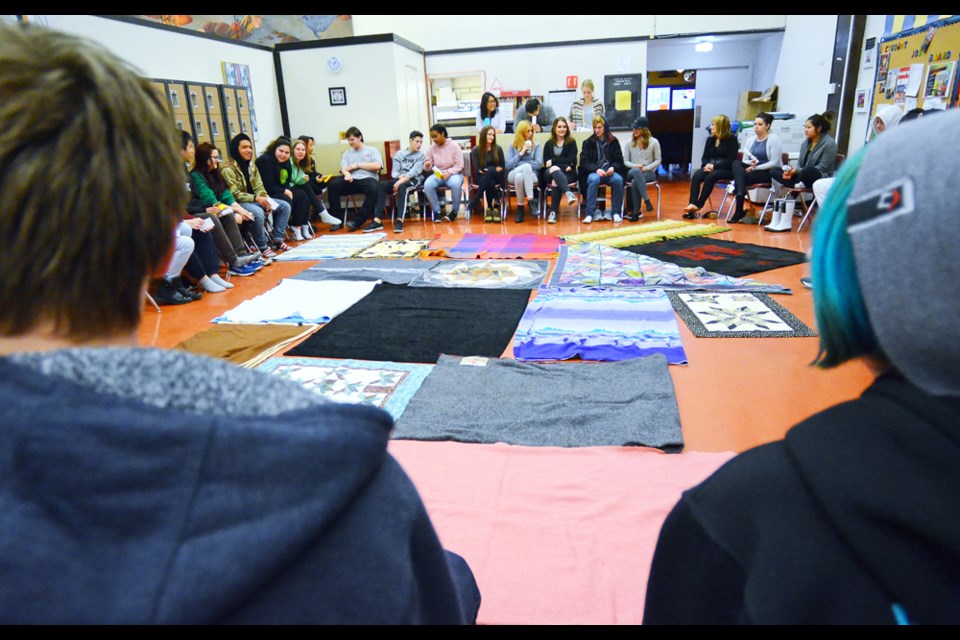It begins with many blankets of different colours and sizes covering the floor. The blankets represent the indigenous groups that lived in North America before European settlers arrived.
By the end, only eight, small and isolated folds of fabric remain.
So went the blanket exercise at Purpose Secondary School. The hour-long experience, held last month, was organized by Alan Moore, a teacher at the independent high school located in downtown New Westminster.
The ceremony took students through the history of the First Nations people in Canada and the relationship between the indigenous and non-indigenous populations.
“What I learned when I was growing up and going to school – it’s so different from what I now know was going on at the time. So I am hoping (the students will) all get a better sense of where we are and where we’re going,” Moore told the Record.
This wasn’t the first blanket exercise Moore has participated in, but it was the first one he’s organized. He and his wife, Bonnie, lived in the Yukon until this summer. There they were heavily involved in the aboriginal community.
“It’s just because it’s close to my heart that I got involved,” Moore said.
The blanket exercise is meant to show, on a scale students can understand, the devastation that took place when Europeans arrived in Canada.
The ceremony began with the facilitator, in this case 21-year-old Megan Jensen, a member of the Carcross/Tagish First Nation in the Yukon and a friend of Moore’s, setting the scene.
Jensen asked the students to be quiet, to listen. Not all could; some snickered, others giggled. She had the students stand on the blankets, two to a blanket.
Jensen explained how life was for the indigenous people before the settlers arrived. They used treaties to resolve disputes, she said. They were statements of peace.
When the Europeans arrived and they needed help, the indigenous people taught them to hunt, to farm the land, to survive the winters. The two groups were trading partners, exchanging goods, she said.
While Jensen spoke, Bonnie and Moore, acting as the Europeans, wove their way through the blankets, folding some into small squares and taking others away altogether to show the impact of the settlers’ presence.
“You went from strong independent nations to poor bands,” Jensen said.
By the end, the snickers and giggles were gone, replaced with a solemn quietness.
Unfold part of your blankets, Jensen told the remaining students. This is to show the progress and growth of the new generation, she said.
“We just want to see the kids having that kind of ‘a-ha’ moment,” Moore said.
“Learning that it is so important to the healing process to just listen to the stories, even if it makes you uncomfortable. And no one is saying you’re at fault, and nobody is saying you can change or fix anything, but part of the process is having these kinds of moments where people have a look at it,” he said. “It changes you.”



